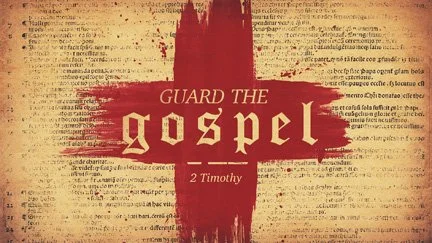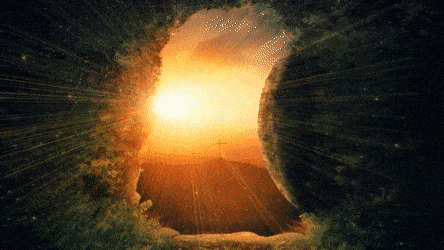A number of years ago, when I was serving in Hamilton, Massachusetts, I went into Boston to visit one of the church members who was in the hospital. June was on her way to a doctor’s appointment to have the cast removed from her arm. As she walked down the office corridor, she fell and broke her hip, and had to have surgery. All of this happened after she had undergone surgery back in the summer of that same year, which had proven to be more complicated than what she was expecting. While I was talking with June, I marveled that she could still smile and laugh. But I knew she was serious when she said, “I’m just ready to write off this entire year. I was ready to write off 2006 even before this!” I knew just what she meant. I have been ready to write off a year or two in my past!
We have all had years that we would just as soon write off, just eliminate them from our memories as easily as we hit the “delete” button on our computers. There are years when we just can’t seem to get ahead, years that it seems like everything that can go wrong does go wrong, years when we wonder how we could possibly bear up under one more burden. There are years when things seem to happen in threes: three deaths, three illnesses, three surgeries. There are years when we would love to stand still for just five minutes and pull out our hair. These are the years the locusts ate.
That image is not one that you probably find familiar. It is an image from the Old Testament book of Joel, not a very well-known book, just a couple of pages long in most Bibles. And it bears the name of a man about whom very little is known. You might recognize the end of the passage I read as being part of the scripture read at Pentecost, but the part I want to focus on comes a little earlier.
In the opening verses of Joel, the prophet described the devastation left by a plague of locusts that had descended on the land. He reported that the locusts had devoured every scrap of natural produce in the entire country. The vines were gone, as were the fig trees; there was no grain, no barley, no wheat; gone were the palm trees and apple trees, even the seeds. The storehouses were empty and the granaries had fallen down. There was no pasture where the cattle and sheep could feed. It was a terrible and deadly situation.
We know that this part of the world is subject to infestations of locusts. In the spring of 1915, for example, there was a particularly bad occurrence, described by John Whiting in National Geographic. At the end of February, great clouds of locusts began flying in from the northeast, so that “attention was drawn to them by the sudden darkening of the bright sun-shine.” They came in enormous numbers, settling on the fields and hillsides, where they laid their eggs in vast numbers. It was calculated that some 60,000 locusts could come from the eggs laid in 39 square inches of soil. Once they hatched, the locusts started crawling across the ground, at a rate of 400 to 600 feet per day, devouring every scrap of vegetation in their path.
When the locusts descended on the land during the time of Joel, people could not help asking what was happening to them and why. People who lived in other lands, who saw what was happening to the Jews, asked them, “Where is your God?” And so, Joel called on the people to pray and to fast and to go to God in prayer, trusting that God would answer.
And God did, indeed, answer their prayers. He promised to restore to them the years the locusts ate. The people would be satisfied. The land would be restored, the plants would grow, the rain would fall. And the people would praise God because they would know, without doubt, that God was there with them. The real restoration was not so much the return of material blessings, although that was appreciated by the people. The real restoration, the true redemption, was in the people’s renewed relationship with God.
When we are intimately related to God, we are aware of the compassion that is always in God’s heart. It would be great if life’s blessings were always plentiful; but it is even better when we know God’s presence with us even when we have to look hard to find any blessings in our lives. The most basic response to any prayer is an awareness of the presence of God. And when we know God is with us, we can look back on the years the locusts ate and see God’s hand restoring and redeeming even there.
I don’t mean to imply that those years the locusts ate weren’t really all that bad, or that they weren’t really all that painful. Certainly I would admit that the last year in my life was pretty rough. And we can all think of years when our finances were stretched to the limit or beyond, when there were deaths or serious illnesses, when jobs were lost or friends betrayed us, when we worried about children or parents. But even in those years, God was working in our lives and bringing something good out of them. Sometimes it seems as if the greatest spiritual growth, the deepest relationships with family and loved ones, and the most precious memories, come from our experiences when we are at life’s lowest moments. Sometimes we see the redeeming features of those years long after the fact, but there is always a glimpse of God’s hand at work in the years the locusts ate.
As Americans, and as New Englanders, we are all familiar with the story of the Pilgrims. The Mayflower dropped anchor in Plymouth Bay on December 21, 1620. I cannot imagine a worse time of year to arrive in this part of the country than the end of December. The voyage from England had lasted 66 days, and the colonists were faced with a hard winter that would claim the lives of more than half of them. Of the 110 Pilgrims and ship’s crew members, fewer than 50 survived that first winter.
During the next year, the Pilgrims were assisted by friendly Native Americans from the Abnaki tribe, including Samoset and Squanto, who helped the new settlers learn to grow Indian corn and tap maple trees, and told them which crops would grow when. The harvest of October of 1621 was very successful, and the people were able to store enough food to last them through the winter. Their homes had been built and they were at peace with their neighbors. It was a good time to give thanks, so Governor Bradford declared a time of thanksgiving that lasted for three days. The Native Americans attended, some ninety of them, including their chief Massasoit. This is what we often remember as the first Thanksgiving Day. But here we are mistaken. The root of our Thanksgiving holiday was not until two years later.
The second year for the Pilgrims was not as plentiful as the first, but they managed to survive. But 1623 was another story. It was hot and dry, and the crops were dying in the fields. The colony was still struggling to make it and was running low on food. They had been expecting a ship for months bringing supplies and more colonists, but it did not arrive. Then they faced severe drought. The Pilgrims were devastated. Governor Bradford ordered a time of prayer and fasting, and eventually the rains came. The governor then issued a declaration stating that November 29 was to be a day of thanksgiving. And that is how our Thanksgiving holiday began. With a day of thanks at the end of one of the years that the locusts ate.
In our lives, there will be good years and bad years, easy years and hard years, years of plenty and years of little, years when all is woe and years when all is joy. And there will be years the locusts ate. In all those years, God will be with us, just as he has been with us in all the years up till now. God will be loving us, guiding us, encouraging us, restoring and redeeming us. And he will restore and redeem all the years the locusts ate.









